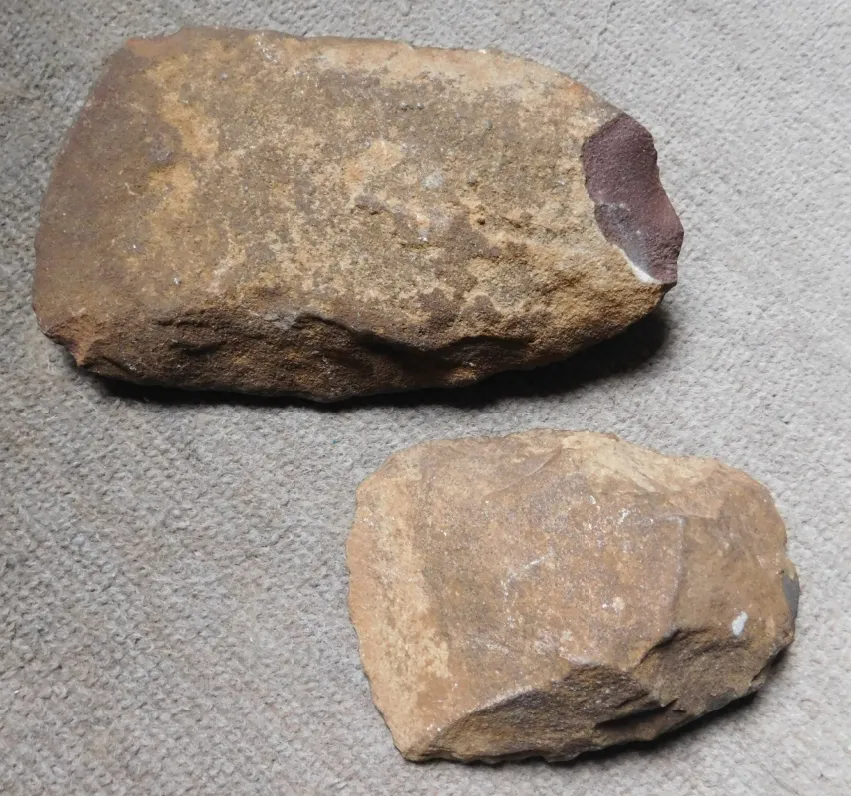Definitely not as common as the handaxe but just as exquisite a stone instrument.
Handaxes are usually made from river cobbles or large flint nodules.
Cleavers on the other hand, at least in my area, are made from a single very large flake.
River cobbles are used because these have already been bashed and battered many times and from all different angles when traveling downriver. In that process only the strongest most competent rocks withstand the beating and are therefore most suitable for tool making.
I cleaver is so named for its single, broad, almost strait edge in contrast to the oval or egg shape of the handaxe.

Cleavers are shaped in such a way that they could have been hafted to a stick and used like an axe.
In this case however, these were likely used just like a handaxe for butchery etc. The shape is simply the result of the manufacture process.
These are not manufactured from a rounded cobble but from the jutting up edge of a slab of outcropping rock.
The edge of the outcrop is given a very hard blow to remove a very large flake of stone that is then trimmed to form the cleaver.

These ones had been lying face down for so long that the upper surface of both show a significant amount of weathering.

The recent chips and damage to these specimens is due to the fact that this was retrieved from a pile of rocks that were removed from a plowed agricultural field.
The deep maroon colour of the rock is due to the high iron content. This is iron that was precipitated and mingled with sand in a delta 2 billion years ago and that was later solidified into an iron rich quartzite.